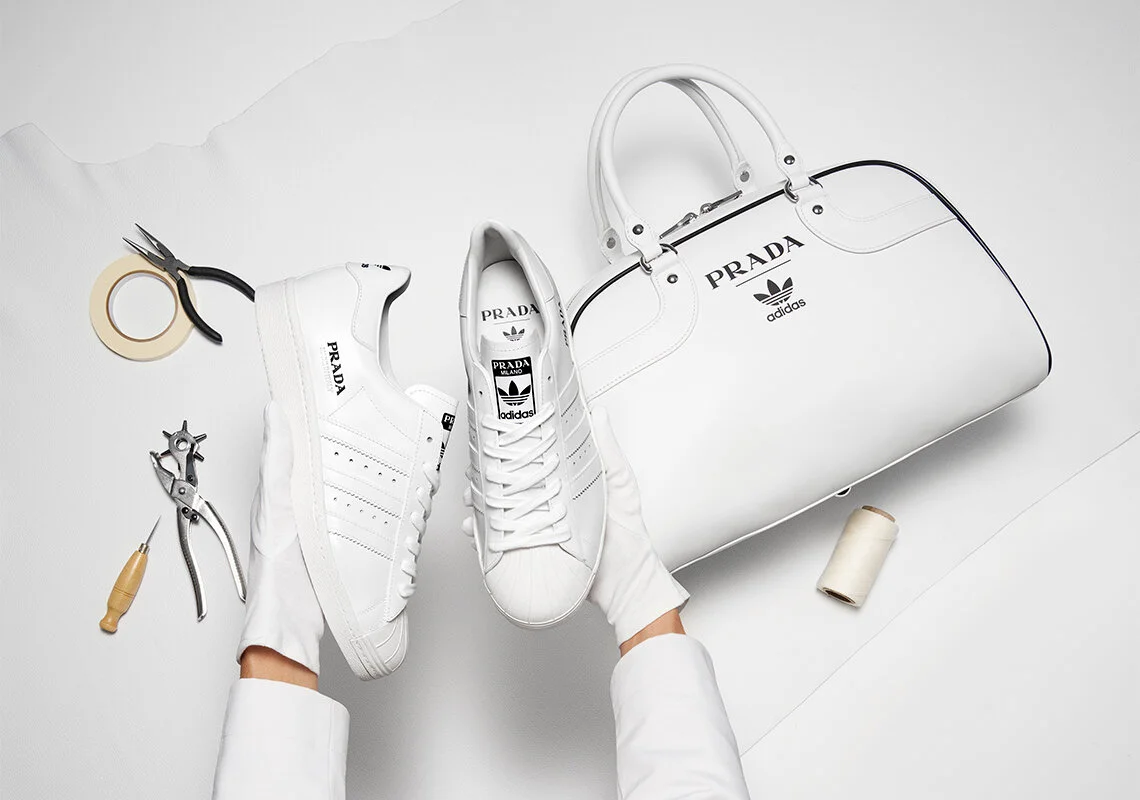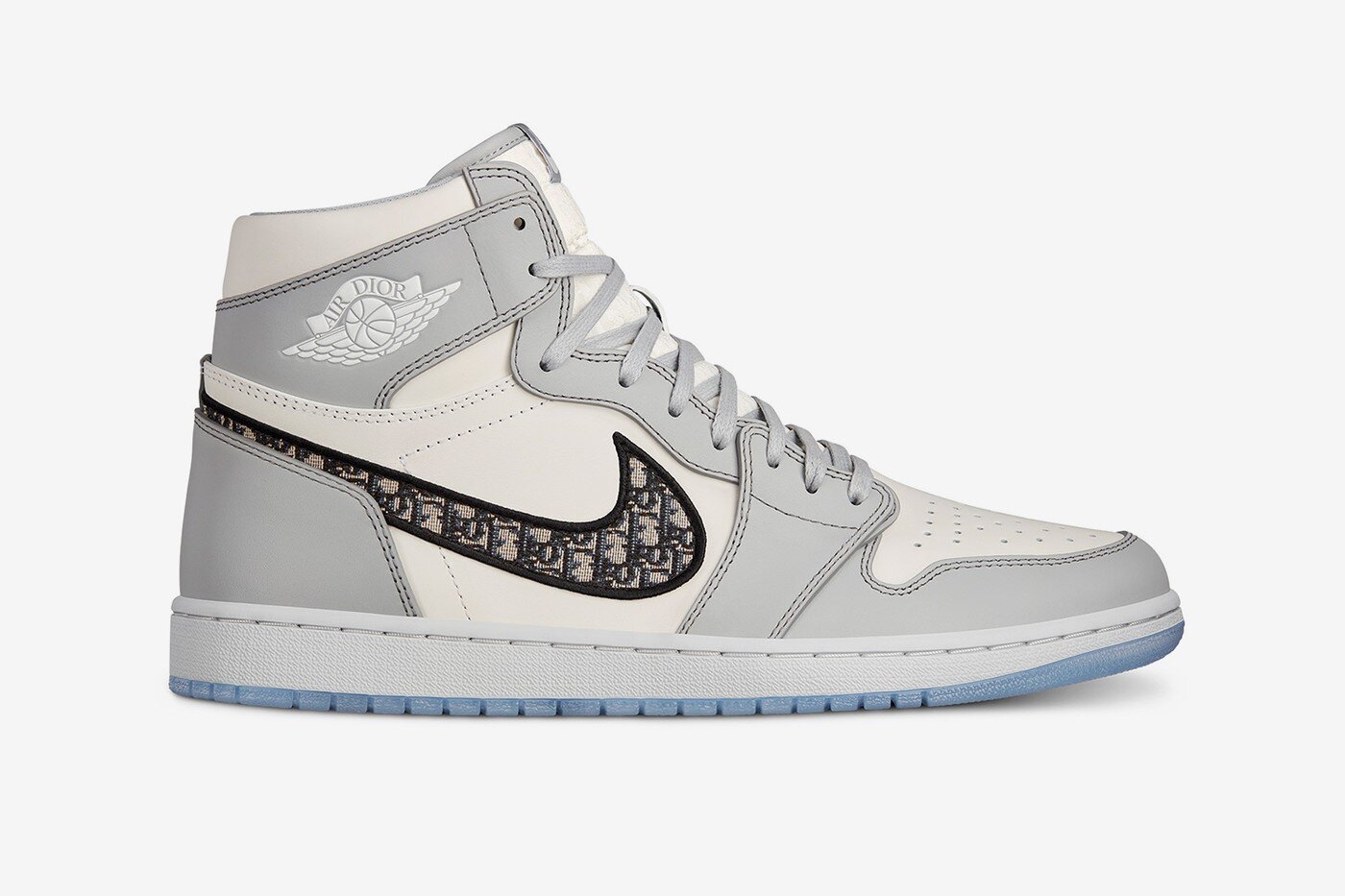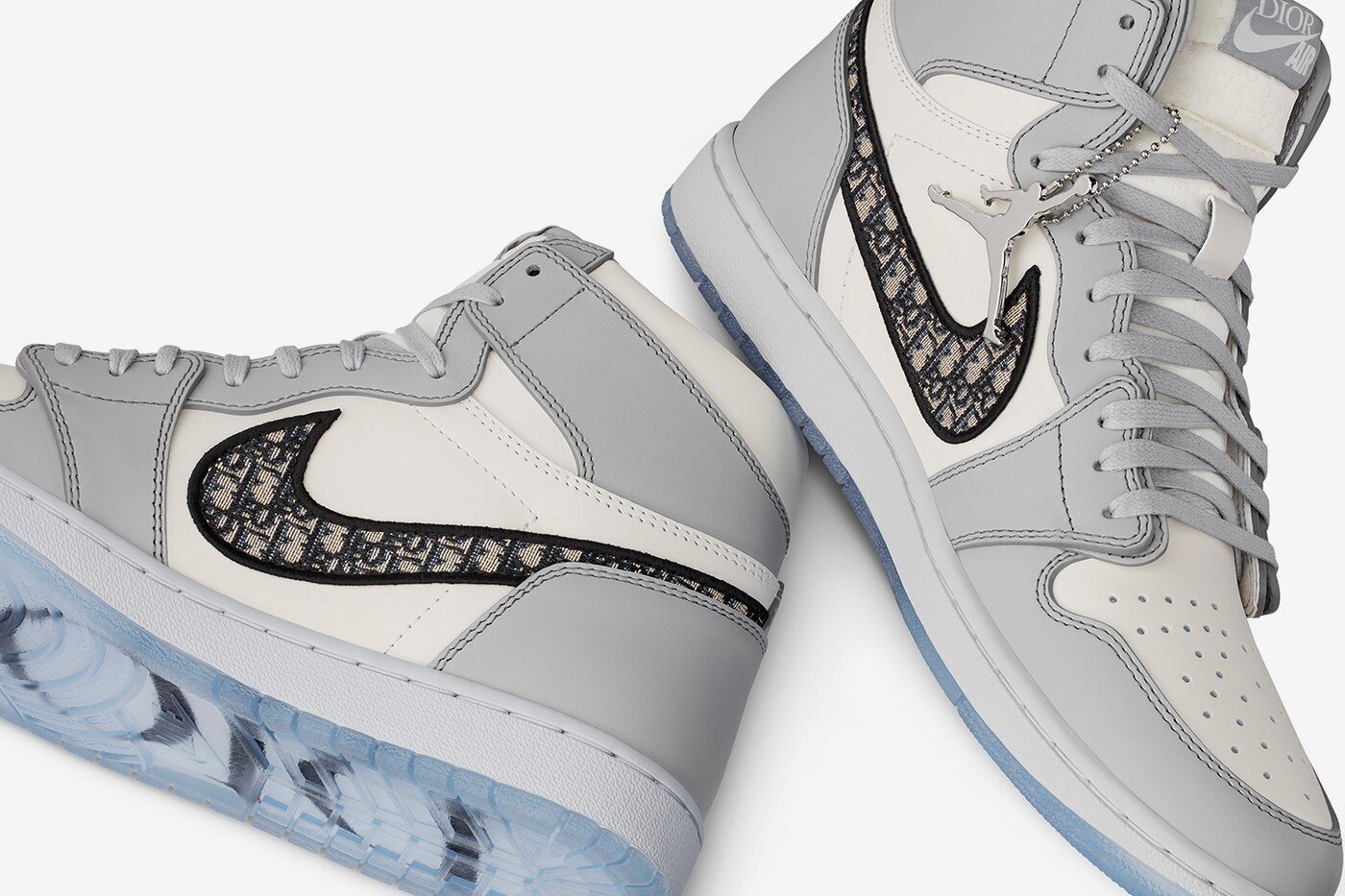Pay-per-view
Dior x Air Jordan 1 High OG
Source: Hypebeast
Collaborations between sneaker brands and “high fashion” designers are not necessarily a new thing. The whole Y-3 brand, Riccardo Tisci AF1s, Nike x COMME des GARÇONS collections, Chanel x Reebok Instapump Furys and adidas lines by Raf Simons as well as Rick Owens are just a few prominent examples. But lately, two new projects were especially aiming for revenue in today’s attention economy. Prada made an all-white leather Superstar for adidas and Dior will release their version of an Air Jordan 1 probably in the spring of 2020. Both shoes are made in Italy, both are designed rather minimally or “detail-oriented”, and both are being promoted as “groundbreaking” or “raising the bar”. In both cases, we are basically talking about elevated interpretations of beloved, iconic silhouettes executed with a level of craftsmanship that is unusual for sneaker manufacturing. That is at least what is being advertised. An amalgamation of competences in the best case; forced and inauthentic pseudo-relevance at worst. In my opinion, both shoes can be placed somewhere in the middle of that spectrum - maybe even slightly more on the “forced” side. They come with a little taste of zugzwang and unfortunately feel more like calculated memes and marketing stunts than concepts that were created out of a passion for product (and I know Kim Jones is a big fan of the Air Jordan 1). To some, this confrontation might seem like an Ali-Frazier-caliber fight between major sneaker brands working together with the most “relevant” fashion brand in their address books. To me, it seems more like an aggressively promoted pay-per-view fight with a lot of viewers, that will be forgotten very soon after. But I don’t like boxing anyway - hence the maybe falsely implemented analogy. Apologies.
Prada x Adidas Collection
Source: Sneakernews
While accepting the contradictory premise of a countercultural mindset manifesting in a sub-culture around consumerism, one still has to question the substance and cultural currency of products that have that sub-culture as a target group. Of course, comparatively, that is quite trivial and sentimental, but to some people, these things are irrationally relevant and maybe even important. That is why I hope that these two shoes do not represent the starting point of an omnipresence of sneaker collaborations which feel like gold plated fast food and probably do not hold any long term significance. In my opinion, there are a lot more interesting and meaningful developments unfolding in the sneaker and streetwear space. Take Erik Brunetti’s freedom of speech supreme court case over FUCT as an example. Unfortunately, the story was quickly overwritten by the new Virgil Abloh "COLLABORATION" of the week in social media timelines and blog feeds. Instead, it should be celebrated as a bigger “victory” for streetwear than luxury houses and sneaker brands shaking hands in hopes of a win-win situation. But is it one though?
Admittedly, I have been a fan of the Raf Simons x adidas collections, which might fall in a similar category for some. The Ozweegos were a pioneer of the “bulky sneaker” trend, which (unfortunately for the Ozweegos) became played out pretty quickly and I also liked Simons’ minimal approach to the Stan Smith - more changes to the original than a “logo slap” but still respectful to it. One could argue - like Chris Danforth already did - that a made in Italy adidas Superstar with a stamped on Prada logo serves the same purpose. I would counter that it feels rushed and that some potential was wasted here. What would be a consequential step from thus point on? Will they continue on their trajectory and put a BOOST sole under a pair of Prada America’s Cup for Prada x adidas part two? Let’s hope for fewer gimmicks and more substantial ideas. The same can be said about the Dior x Air Jordans I think. To be fair, they have some nice, more or less hidden, details but the monogrammed (and scaled up swoosh) reminds me more of some of those customs that repurpose monogrammed fabric from LVMH and Kering brands into sneaker patterns than exciting design. These cases feel rushed in comparison to a somewhat innovative and surprising approaches like the sacai x Nikes, thought-out storytelling like adidas’ recent “Berlin Wall Pack”, or a consistency with the unique taste level of the collaborator like Aimé Leon Dore x New Balance and Awake x Asics. And if delivering high-quality executions of iconic sneaker silhouettes are the driving motivation here, which is quite applaudable in principle, Instagram is a rather inadequate tool to bring that point across.
Both sneakers probably won’t be attainable to most people except you are rich (and stupid) enough to pay thousands on the resale market. As if the retail prices were not “luxurious” enough already. I guess if it is really a well-crafted product of superior quality compared to mass production sneakers and the people producing the shoes are paid fairly, these price tags could be reasonable. Sean Wotherspoon can rave about the quality and focus on detail in a promo video for the Dior Jordans all day, but most people won’t be able to verify these claims because they’ll never hold the shoes in their hands. And yes, this is the case for most very limited sneakers these days and I get the idea of artificial scarcity and that people want what they can’t have. But nonetheless, this whole social media circus with no-brainer celebrity seeding and paid content activations seems pointless. The moment I see some rapper or designer flaunting the shoes, I know I will not be able to get them, and this time I do not even care. I mainly miss a kind of meaningful connection when looking at these projects. A real connection between the collaboration partners as well as a tangible connection to an interested consumer. What halo effects are the brands gunning for here? I don’t think Dior has more “street credibility” because they did an Air Jordan 1 and I don’t think about Air Jordans as a luxury product now because they collaborated with Dior. Again, the same goes for adidas x Prada.
Like already mentioned, in my opinion, these collaborations mainly feel inorganically calculated, rushed, and severely ephemeral. I think it is doubtful that these sneakers will have any longevity regarding cultural currency. One has to wonder whether these collaborations are to blame in particular or if they are merely a symptom illustrating all the immanently problematic elements of the concept of “luxury sneakers”.
Hopefully, the “headlines > product” mantra which unfortunately seems to be way too dominant these days will be reversed again at some point.
Thumbnail picture:
Barbara Kruger, Untitled (When I hear the word culture I take out my checkbook)
Source: Christie’s









